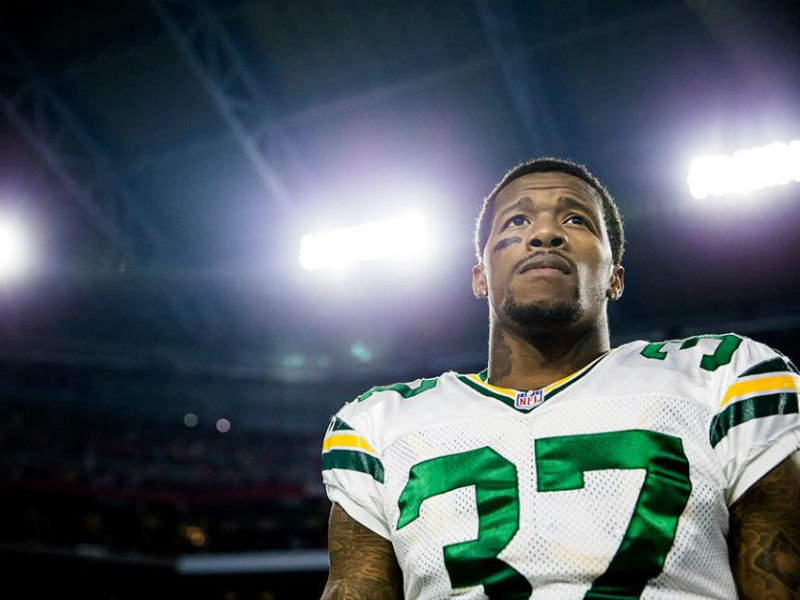The Packers announced Tuesday they’d placed cornerback Sam Shields, who’s been sidelined for more than a month with a concussion suffered in the season opener, on injured reserve, a move that has seemed inescapable for weeks and probably should have been made sooner.
And while the decision doesn’t help Green Bay’s depleted, deficient secondary – the team was without its top three cornerbacks by the end of Sunday’s loss to Dallas and allowed three passing touchdowns – it is unquestionably the right one, considering not only the NFL’s stated intention to prevent and treat head injuries, but also Shields’ extensive, alarming past history of them.
This is the 28-year-old’s fifth concussion in less than a decade – he’s had four with the Packers and one in college at Miami – and his second in less than nine months, dating back to last season. It’s become clear, with Shields not able to advance out of the league’s protocol or off of the team’s weekly injury report, that he is still experiencing post-concussion syndrome. According to the NFL Network’s Mike Garafolo, Shields’ symptoms have not subsided as Green Bay had anticipated. While the duration of post-concussion syndrome is incredibly variable, numerous studies have found that players who’ve sustained multiple traumatic brain injuries have dramatically worsened symptoms and increased recuperation time.
On Tuesday afternoon, Shields posted a sanguine message on his Instagram. "I'm making great progress and hope to come back in 8 weeks and play this season. I will make a full recovery within that time frame," he wrote. If the Packers elect to place him on the Reserve/Injured List, with a designation to return, Shields could practice in six weeks and be eligible to play two weeks later – assuming he passes through the concussion protocol.
The Packers have yet to make a decision on whether to use the designated-to-return tag on Shields, but he joins running back John Crockett, cornerback Makinton Dorleant and defensive tackle Tyler Kuder on the list.
It seems that only the sheer amount of time that has passed without real improvement finally forced the Packers’ hand. Until deciding to place him officially on IR, and despite what has now been exposed as no significant convalescence, Green Bay listed Shields on the injury report every Friday, along with teammates who had hamstring strains and ankle sprains, waiting to inevitably rule him out for each week’s game.
Inexplicably, only five days after Shields suffered his latest concussion at Jacksonville on Sept. 11, he was still listed as "Doubtful" – indicating a 25 percent chance of playing – for the Packers’ Week 2 game against the Vikings. It felt obliviously optimistic, almost cold, or even an oversight of the league’s oft-referenced protocol, that a player who’d just had his fourth NFL concussion wouldn’t simply be systematically ruled out for that week.
Hopefully, Shields gets better, with the priority of protecting his brain and long-term health emphasized over his desire to get back on the football field. In his Tuesday press conference, Packers coach Mike McCarthy – who has been asked about Shields almost daily for a month and recently said he’d been making progress – expressed that big-picture sentiment.
"The plan for Sam is to get him healthy, number one," McCarthy said. "It's going to be longer than we might have expected, so it's just going off the last conversation I've had with Sam. It's just important to go one day at a time and make sure we get him healthy."
Shields is a very good player – despite playing in only two of the Packers’ last 10 games due to concussions, he’s probably still their best cornerback – but the risk of him returning to the field, whether it’s in six weeks, eight weeks or a year, is very real and severely consequential.
In the past, this franchise has been extremely cautious and unbending in its handling of players that have endured career-jeopardizing neck and back injuries (Terrence Murphy, Nick Collins, Jermichael Finley, Johnny Jolly, just in the last decade), unwilling – and perhaps admirably – to allow them to return.
Given that concussions are the NFL’s highest-profile and most threatening long-term problem, both to the league's own success and its players' futures – and without personally advocating for or against the player's return, nor professing to know what’s in his best interest – it will be awfully interesting to see how Sam Shields’ future unfurls with the Green Bay Packers.
Born in Milwaukee but a product of Shorewood High School (go ‘Hounds!) and Northwestern University (go ‘Cats!), Jimmy never knew the schoolboy bliss of cheering for a winning football, basketball or baseball team. So he ditched being a fan in order to cover sports professionally - occasionally objectively, always passionately. He's lived in Chicago, New York and Dallas, but now resides again in his beloved Brew City and is an ardent attacker of the notorious Milwaukee Inferiority Complex.
After interning at print publications like Birds and Blooms (official motto: "America's #1 backyard birding and gardening magazine!"), Sports Illustrated (unofficial motto: "Subscribe and save up to 90% off the cover price!") and The Dallas Morning News (a newspaper!), Jimmy worked for web outlets like CBSSports.com, where he was a Packers beat reporter, and FOX Sports Wisconsin, where he managed digital content. He's a proponent and frequent user of em dashes, parenthetical asides, descriptive appositives and, really, anything that makes his sentences longer and more needlessly complex.
Jimmy appreciates references to late '90s Brewers and Bucks players and is the curator of the unofficial John Jaha Hall of Fame. He also enjoys running, biking and soccer, but isn't too annoying about them. He writes about sports - both mainstream and unconventional - and non-sports, including history, music, food, art and even golf (just kidding!), and welcomes reader suggestions for off-the-beaten-path story ideas.







